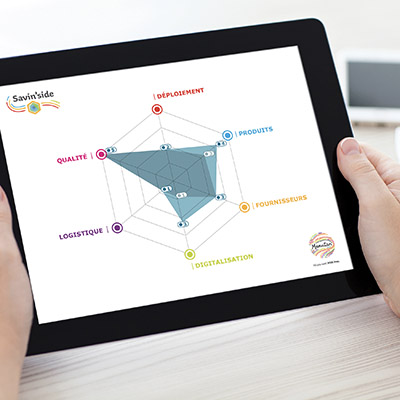In the world of procurement, acronyms and abbreviations are legion. However, it is important to understand the workings and underlying issues of each terminology to ensure perfect mastery of the processes. In this respect, we often find RFIs (Request for Information), RFPs (Request for Proposal) and RFQs (Request for Quotation). These terms designate tools to streamline procurement processes, in the context of supplier selection. At the end of these processes, procurement departments are able to make informed decisions for the purchase of goods and/or services within their organisation. While these three acronyms may seem similar, they do have their own specificities.
What is an RFI?
The RFI is a request for general information. This occurs upstream of the supplier selection process, with the purpose of pre-qualifying the actors who will be integrated into the bidding process. An RFI is also more aimed at potential suppliers in order to better understand them. The idea is to better comprehend their offering, their market position, their customer references, their experience…
Procurement departments then solicit general information on suppliers and their offerings. They evaluate key aspects of their potential suppliers, namely their financial strength, their ability to meet their company’s needs, as well as their standards and/or certifications.
This allows procurement departments [NE1] to collect market information, measure suppliers’ interest in working with their company, but also to facilitate the choice of suppliers who will then be consulted and to anticipate future negotiations. As you can see[NE2] , this request for information is generally used to establish a shortlist of potential suppliers before moving on to more formal stages, such as the RFP (Request for Proposal) or the RFQ (Request for Quotation).
What is an RFP?
An RFP stands for[NE3] request for proposal. This management software allows suppliers to be evaluated on criteria other than price, in order to identify the best partner.
It is a formal request addressed to suppliers to submit a concrete proposal in response to a specific set of requirements. This includes all the necessary information to develop a complete proposal: The objectives, pricing, technical specifications of the products and/or services concerned, delivery conditions, schedule and many other key elements.
The RFP is typically used when companies already have a clear idea of their specific needs and want to obtain detailed proposals to evaluate the different options available on the market. From then on, they can compare the offers received on the same basis, objectively.
What is an RFQ?
The RFQ, lastly, denotes a request for quotation. This is a formal request addressed to suppliers in order to obtain specific prices for defined goods or services. The objective of such a tool is to compare the prices and terms offered by different suppliers for the same request.
In the case of tenders, the procurement department will have carefully defined its needs and analysed the market upstream. This is why it may have launched an RFI or RFP beforehand, and thus invited the pre-selected suppliers to provide a more detailed proposal.
RFQs are particularly suited for recurring or standardised purchases for which the specifications are clearly defined and the main selection criterion is economic.
In summary, what are the differences between RFI, RFP and RFQ?
Whether RFIs, RFPs or RFQs, these tools are part of a strategic sourcing approach. They allow buyers to save time, money and reduce risks.
However, these types of requests differ particularly in:
- Their objective: While the RFI aims to obtain generic information from suppliers, the RFP and RFQ best fit the evaluation of suppliers.
- Their request: Each request relates to different elements – general information for the RFI, a complete proposal responding to specifications for the RFP and a price proposal for the goods and/or services concerned in the case of the RFQ.
- Their style: The RFP and RFQ are formal requests compared to the RFI. However, the RFP remains more complete and detailed, while the RFQ focuses mainly on pricing.
- Their advantages: The RFI allows you to probe the market, the RFP offers a fair comparison between suppliers and the RFQ focuses on cost reduction.
Thus, each tool meets a given need. If you are not exactly sure which solution can meet your needs, you can choose an RFI. If you want to obtain better quality of services and/or products, you should go for an RFP. Lastly, if you want to reduce the costs of a product and/or service, you will be more likely to opt for an RFQ.
|
|
RFI |
RFP |
RFQ |
|
Objective |
Collecting general information on potential suppliers when unsure of the solution sought |
Evaluating suppliers on criteria that go beyond price |
Evaluating suppliers based on quoted prices for goods and/or services |
|
Request |
Generic details about a supplier |
Complete proposal from a supplier, including technical and financial details |
Price proposal for goods and/or services provided by a supplier |
|
Style |
Informal |
Formal and direct |
Structured and normative |
|
Advantages |
Easy and quick to execute, this approach helps the procurement department gauge the market. |
This approach offers a fair comparison between suppliers, based on their capabilities. |
This approach allows overall costs to be reduced. |
Whether RFIs, RFPs or RFQs, these tools ultimately serve to better understand and compare the offers proposed by suppliers, but also to build a transparent and constructive relationship with them. This allows organisations to make better decisions, while optimising their procurement processes.









